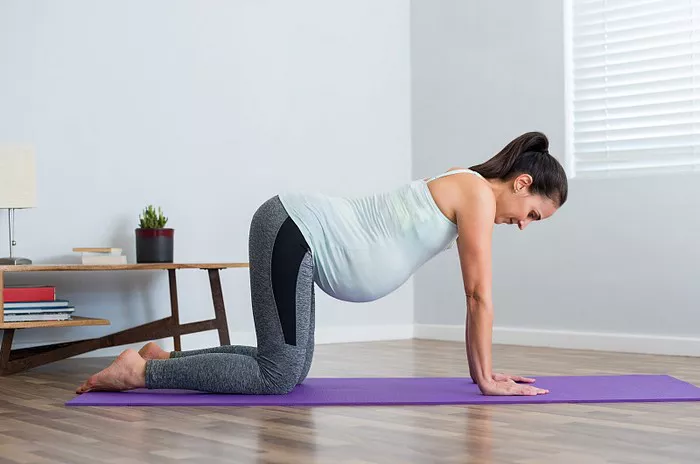The journey of motherhood is a profound and transformative experience that extends far beyond the delivery room. While the joy of welcoming a new life is unparalleled, the postpartum period brings with it a myriad of physical and emotional changes. In navigating this delicate phase, many new mothers find solace, strength, and restoration through the ancient practice of yoga. In this article, we will explore the multifaceted benefits of postpartum yoga, delving into its ability to promote physical healing, emotional well-being, and the overall empowerment of women in their postpartum journey.
Physical Healing: Reconnecting with the Body
The physical toll of pregnancy and childbirth can leave new mothers feeling fatigued and disconnected from their bodies. Postpartum yoga serves as a gentle yet effective means of reclaiming and rejuvenating the physical self. With a focus on breath awareness, gentle stretches, and strengthening exercises, yoga assists in realigning the body and rebuilding core strength.
a. Restoring Pelvic Floor Health:
The pelvic floor undergoes significant strain during childbirth. Postpartum yoga incorporates targeted exercises to strengthen and restore the pelvic floor muscles, aiding in the recovery of tone and flexibility.
b. Alleviating Muscular Tension:
Pregnancy often leads to muscular tension and imbalances. Yoga postures designed for postpartum recovery address these issues, promoting flexibility and easing tension in areas such as the shoulders, back, and hips.
c. Enhancing Posture and Alignment:
The physical changes experienced during pregnancy can impact posture. Through mindful movement and alignment-focused poses, postpartum yoga supports the restoration of optimal posture, preventing long-term discomfort.
Emotional Well-Being: Nurturing the Mind and Spirit
The postpartum period is a time of emotional flux, with hormonal shifts, sleep deprivation, and the demands of caring for a newborn contributing to heightened stress levels. Postpartum yoga, with its holistic approach, provides a sanctuary for emotional healing and self-care.
a. Stress Reduction through Mindful Breathing:
Yoga places a strong emphasis on breath awareness, teaching new mothers to use conscious breathing techniques to manage stress and promote relaxation. Mindful breathing has been shown to reduce cortisol levels, fostering a sense of calm amidst the chaos.
b. Enhancing Mental Clarity and Focus:
Sleep deprivation and hormonal fluctuations can affect cognitive function. Postpartum yoga incorporates mindfulness practices and meditation, aiding in improving mental clarity and enhancing the ability to focus on the present moment.
c. Fostering Connection and Community:
Joining postpartum yoga classes provides an opportunity for new mothers to connect with others going through similar experiences. Building a sense of community can alleviate feelings of isolation and create a supportive environment for sharing and growth.
Empowerment: Building Strength from Within
Postpartum yoga transcends the physical and emotional realms, fostering a sense of empowerment that extends into all aspects of a woman’s life. Through mindful movement and self-reflection, new mothers can harness their inner strength and resilience.
a. Body Positivity and Self-Acceptance:
The societal pressure to “bounce back” after childbirth can be overwhelming. Postpartum yoga encourages self-acceptance and celebrates the beauty of the postpartum body, fostering a positive relationship with one’s physical self.
b. Building Confidence in Motherhood:
The challenges of new motherhood can be daunting. Postpartum yoga cultivates confidence by encouraging self-care, promoting self-awareness, and providing tools for navigating the complexities of parenthood with grace and resilience.
c. Balancing Priorities:
Juggling the demands of motherhood, work, and personal well-being can be challenging. Postpartum yoga teaches time-efficient self-care practices, helping mothers find balance and prioritize their own needs alongside the needs of their families.
Practical Tips for Starting Postpartum Yoga
a. Consult with Healthcare Providers:
Before starting any postpartum exercise regimen, it is crucial to consult with healthcare providers to ensure that the body is ready for physical activity. This is especially important for mothers who have undergone cesarean sections or experienced complications during childbirth.
b. Choose the Right Class:
Opt for postpartum yoga classes specifically designed for new mothers. These classes often incorporate modifications tailored to postpartum bodies, creating a safe and supportive environment for practice.
c. Listen to Your Body:
Each postpartum journey is unique. It is essential to listen to the body and progress at a pace that feels comfortable. Pushing too hard too soon can impede recovery, while gentle, mindful movement promotes healing.
d. Invest in Supportive Gear:
Investing in comfortable and supportive yoga attire, as well as a quality yoga mat, enhances the overall experience. Proper gear contributes to physical comfort and fosters a positive mindset during practice.
Conclusion:
Postpartum yoga emerges as a holistic and empowering practice, offering a sanctuary for physical healing, emotional well-being, and the cultivation of inner strength. In the midst of the profound changes that accompany new motherhood, yoga becomes a transformative tool, guiding women on a journey of self-discovery and empowerment. By embracing the ancient wisdom of yoga, new mothers can not only navigate the challenges of the postpartum period but also emerge stronger, more resilient, and connected to the profound beauty of their own journey.














